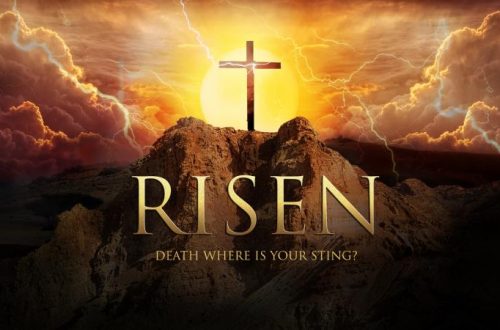Christus Victor through Penal Substitution
Around the globe, Christians gather together on Easter Sunday to celebrate Jesus’ resurrection from the dead. Despite the assertions made by skeptics, there is a considerable amount of evidence confirming the factuality of the empty tomb.
Indeed, the above was the topic of a recent podcast involving Professors Darrell Bock and Gary Habermas.[1] Together, they deliberated the relevant historical data affirming that Jesus of Nazareth not only died on the cross, but also bodily rose from the dead on the third day.
For instance, there are several early, distinctive literary sources that individually and collectively substantiate the historicity of the cross-resurrection event (e.g. each of the four Gospels, the book of Acts, and the writings of Paul). While these ancient sacred texts were written in various geographical locales, at different times, and to distinctive audiences, they remain in essential agreement concerning the episodes they recount.
During the podcast, the two professors noted that an entirely different, though related, issue concerns the theological significance of the cross-resurrection event. Admittedly, the Bock-Habermas exchange does not spend much time deliberating the reasons for Jesus’ atoning sacrifice. This is one major incentive for the present blogpost.
I’ll start off by noting that in his bestselling textbook, Christian Theology (2013; Zondervan; p. 215), Millard Erickson draws attention to the “manifold theories of the atonement” put forward by “theologians” down through the centuries. These include (among others), the Socinian theory, the moral-influence theory, the government theory, the ransom theory, and the satisfaction theory. As Erickson notes, none of these formulations is entirely complete and adequate in the explanation it offers.
Jeremy Treat, in The Crucified King (2014; Zondervan), advances the discussion by exploring the connection between Jesus’ atoning sacrifice at Calvary and the kingdom of God. Treat especially deliberates two prominent views, namely, Christus Victor and penal substitution. Based on his thoroughgoing analysis, he argues for “Christus Victor through penal substitution” (p. 192). I think his extensive analysis and reasoning are insightful.
Also worthy of mention is the useful illustration articulated by Mike Wittmer. In a blogpost titled, “What makes a full atonement full?”,[2] he proposes the “four arms of the cross” as a way to make sense of what Jesus did on behalf of the lost:
(1) “downward, toward Satan”–this Christus Victor“ aspect of the cross” was a reminder that the Son “died to defeat Satan,” the archenemy of believers who “held the power of sin and death”;
(2) “upward, toward God”–this “penal substitution” aspect of the cross was a reminder that the Son appeased the “Father’s wrath” and “satisfied” His eternal justice by “bearing” the “penalty” of humanity’s sin in their “place” and as their perfect substitute; and,
(3) “sideways,” toward the lost–this aspect of the cross provided a “moral influence” and “example” by demonstrating how much God unconditionally loved humankind.
In short, the divine “goal” was Christus Victor, the “means” was “penal substitution,” and one “benefit” (among many) was the Messiah’s “example” of “love” for all people.
Paul’s teaching in Romans 3:25–26 offers an incisive biblical expression of the preceding observations. The apostle revealed that the Father presented His Son as a sacrifice of atonement. The Greek noun for “sacrifice of atonement” (hilastḗrion) is rendered more literally as “propitiation.” This word communicates the idea that Jesus’ work on the cross averted God’s justifiable wrath against sinners.
Jesus’ sacrificial death also provided “expiation,” or the removal of personal guilt. Paul was making a parallel between the atoning sacrifices offered in the Jerusalem temple and Jesus’ offering of Himself on the cross.
Paul revealed that Jesus’ redemptive work is appropriated “through faith in his blood.” Indeed, it is only as a result of trusting in the Son that repentant sinners receive the benefits of Jesus’ atoning death at Calvary. In this regard, salvation is not something that can be earned, but only welcomed by God’s grace with humility and gratitude (see Eph 2:5, 8–9).
As the Reformed tradition notes, when a person becomes a Christian, a “marvelous exchange” occurs. The believer’s sinfulness is transferred to Jesus on the cross and His perfect righteousness is transferred to the believer.
The good news is that through this divinely-initiated and enacted transaction, the requirements of the Mosaic Law are met in full. Just as remarkable is the truth that Jesus’ righteousness in the believer enables that person to live consistently according to the Spirit (see Rom 8:4).
To conclude, Paul’s exhortation in Galatians 5:25 serves as an appropriate prayer, especially as Christians throughout the globe celebrate this Easter Sunday, Jesus’ resurrection from the dead: “Since we live by the Spirit, let us keep in step with the Spirit.”
________________________________________________________________________
[1] Bock DL and Habermas 2018. Evidence for Jesus’ empty tomb. The table podcast. Dallas: Dallas Theological Seminary. Weblink: https://voice.dts.edu/tablepodcast/empty-tomb/.
[2] The Gospel Coalition (2013). Website: http://thegospelcoalition.org/blogs/tgc/2013/09/26/what-makes-a-full-atonement-full/.



